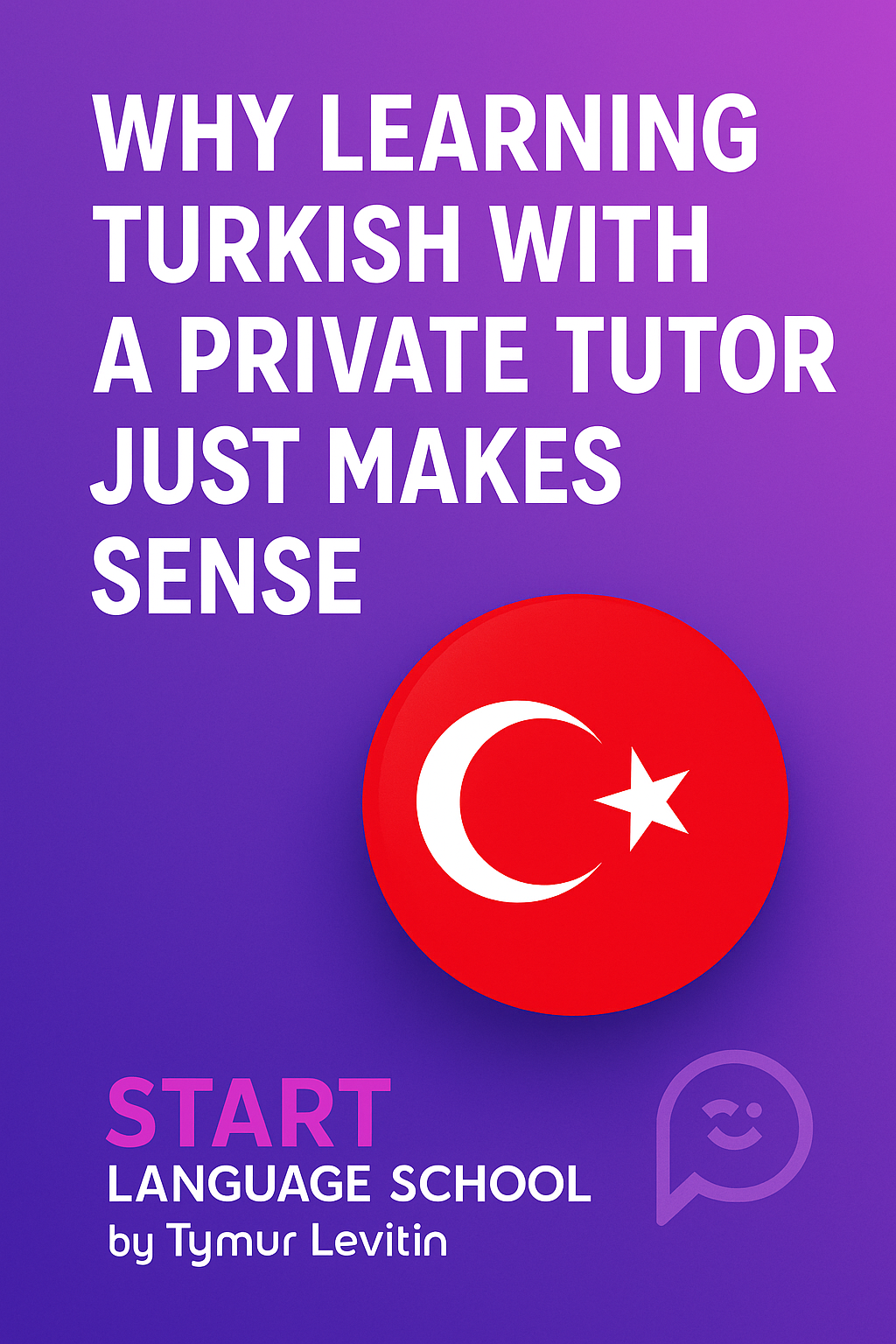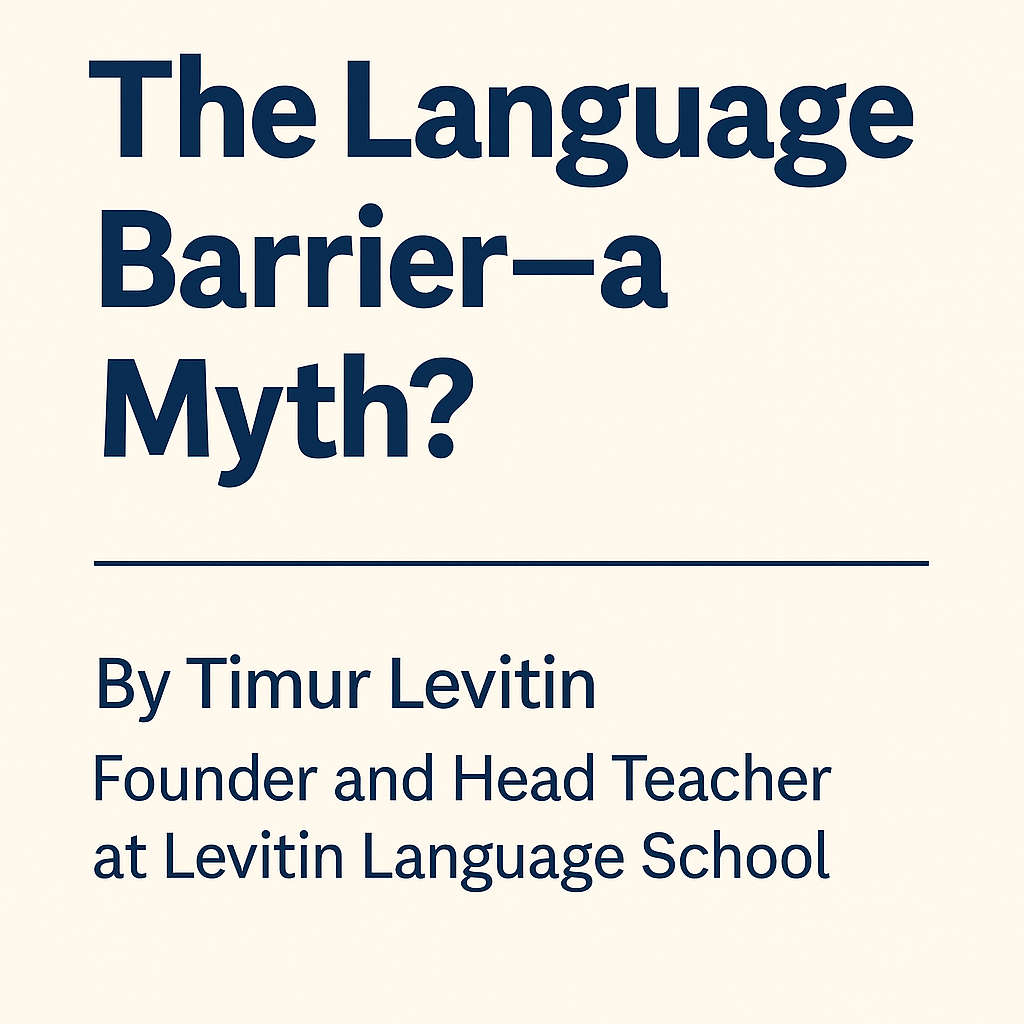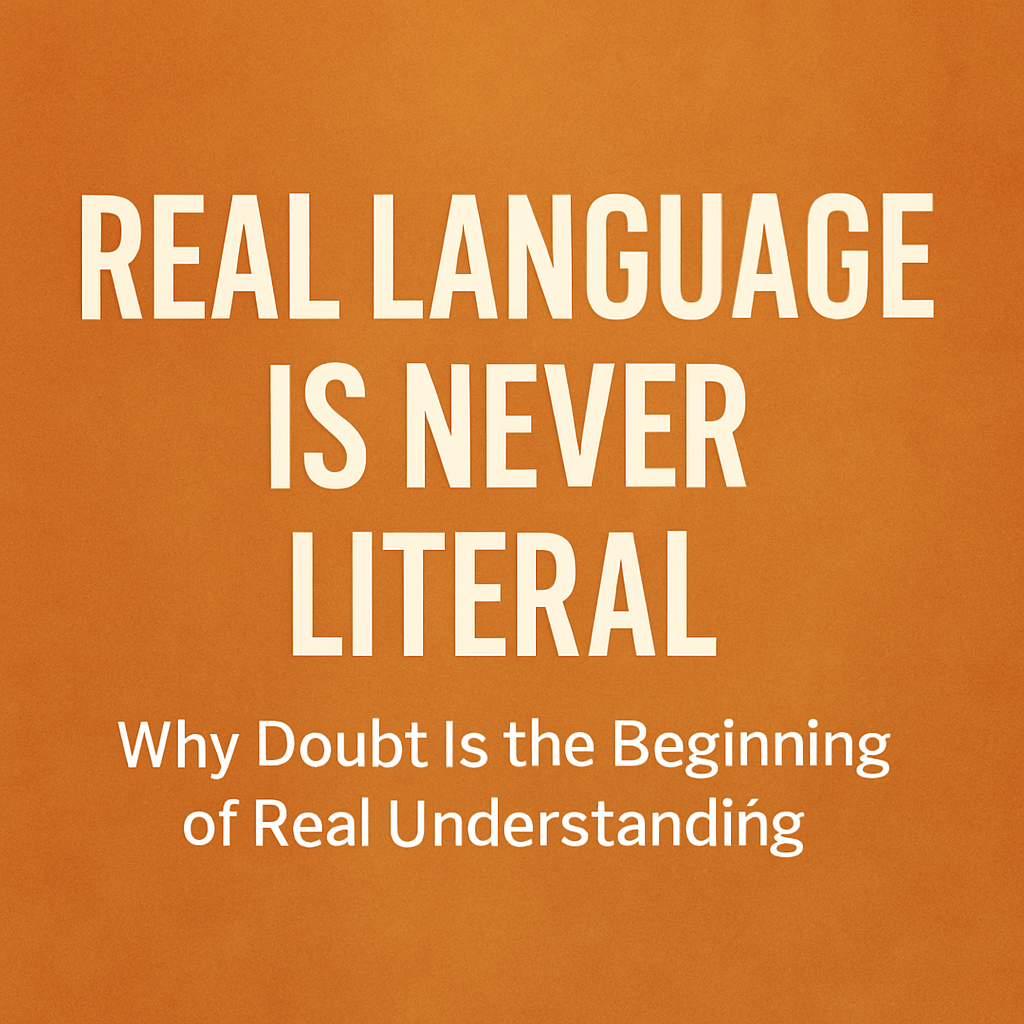Tymur Levitin 的作者专栏
列维廷语言学校创始人兼校长
🔗 开始语言学校》,作者 Tymur Levitin
如果 "语言障碍 "与语言无关呢?
"我知道单词。我知道语法但我还是不会说话"
听起来耳熟吗?
全世界的学生每天都这么说。这也是许多人仍然称之为 语言障碍.但我们还是实话实说吧: 真正的障碍不在于语言,而在于思维方式.
事实上,您越 知道 但不要 领会这个障碍就越高。
为什么知识≠掌握
大多数传统课程都将语言分为三个部分:
- 语法
- 词汇
- 发言
然后,他们提出了一个线性序列:
先礼后兵.
这种方法已经过时,而且效果不佳。
因为语言不是一张清单。
这是一个 生命系统因此,必须同时学习《......》及其组成部分,而不是一个接一个地学习。
发言不是重复
语言学习中最危险的神话之一是
"如果你能重复它,你就能说出它"。
事实并非如此。
如果你不明白
- 为什么 句子是这样造的、
- 重新排列会有什么变化,
- 或 适合情况 -
那么你就没有发言权。你是 执行.
许多学生就是这样在基本情况下 "蒙混过关 "的--直到有什么事情出了差错。
然后,整个幻觉就坍塌了。
真正的 "障碍 "是缺乏结构
当学生面对意想不到的事情时--较长的问题、不同的词序、不熟悉的成语--他们就会愣住。
它们不会冻僵,因为它们很脆弱。
他们愣住了,因为从未有人教过他们导航。
因为他们被教导 模仿不是 以了解.
如何帮助学生突破
以下是真正有效的方法--始终如一,跨越语言:
✅ 1.在情境中学习
教授词汇、结构、发音和语法 作为一个系统而不是单独的。
✅ 2.解释,而不是猜测
不要浪费时间猜测单词的意思。
问。问清楚。了解原因。
✅ 3.建立在结构上的直觉
直觉的力量是强大的。
但它必须通过反复、有意义的语言接触来训练。
✅ 4.真实演讲,而不是照本宣科
真正的语言是杂乱无章的。
它包括重新表述、停顿和更正 和大声思考的自由。
那么你应该怎么做呢?
我是这样告诉每个学生的:
📌 不要害怕犯错。
📌 不要等到自己觉得 "准备好了 "才发言。
📌 不要丢弃语法--合理使用语法。
📌 最重要的是: 要求解释。你理应得到理解。
语言与考试、水平或趋势无关。
这是关于 思维清晰、理解深刻、畅所欲言--并知道自己在做什么。
如果你对演讲没有信心,并不是因为你有什么问题。
这是因为你所接受的教育方式并不适合真正的交流。
相关阅读(即将推出)
→ 为什么我们不保证你能在 30 天内演讲
→ 最佳英语语言课程 - 什么最重要
→ 向帮助您思考的私人教师学习英语
链接将在发布后更新。
© Tymur Levitin
✍️ 作者、莱维廷语言学校创始人、校长兼首席教师
本文是作者专栏的一部分:
🟦 没有幻想的语言Tymur Levitin 关于真正学习的专栏
🔜 下一个系列:
"全浸入式教学法:他们没有告诉你的事情"
即将推出
























